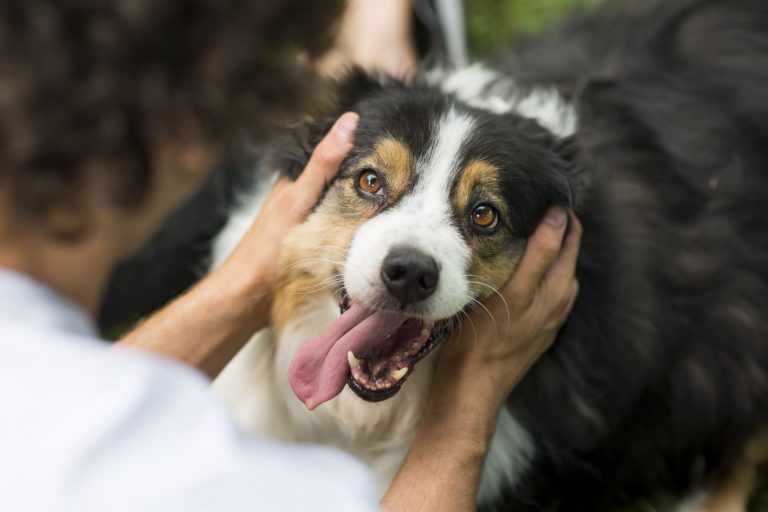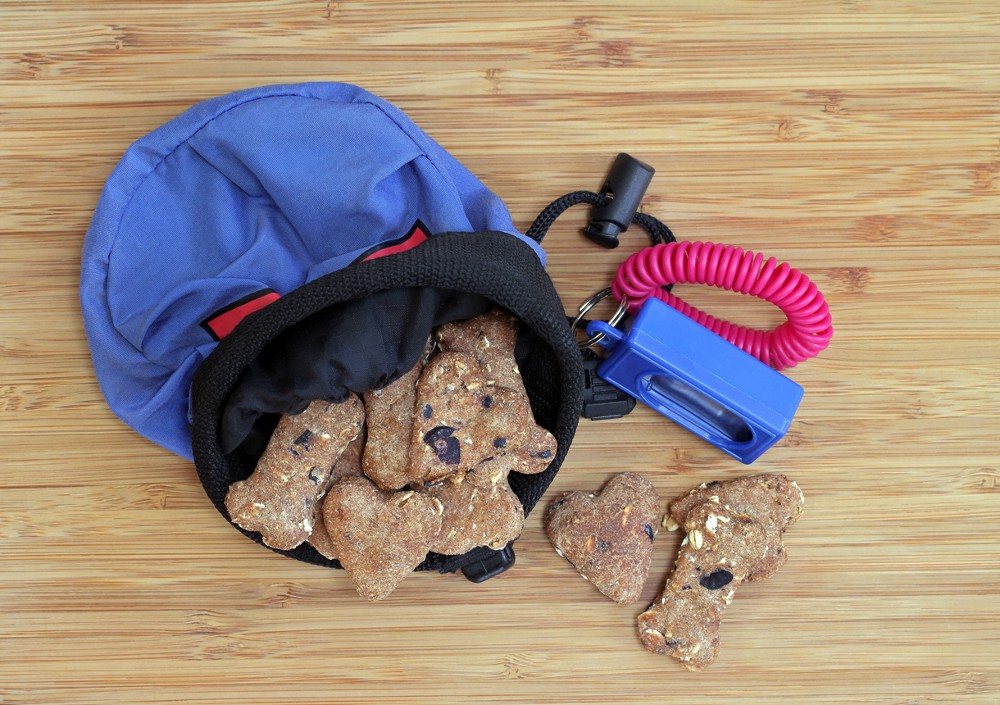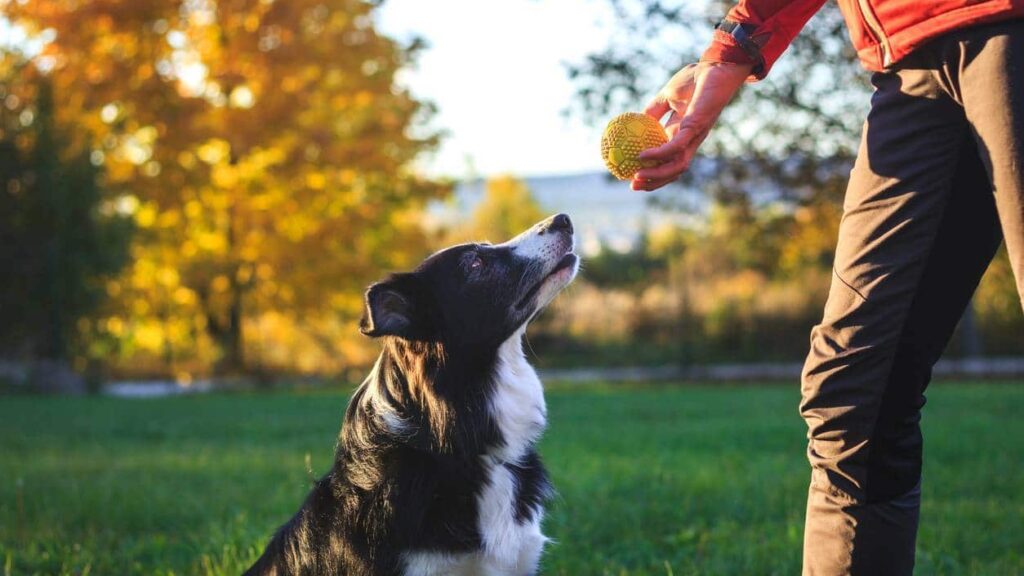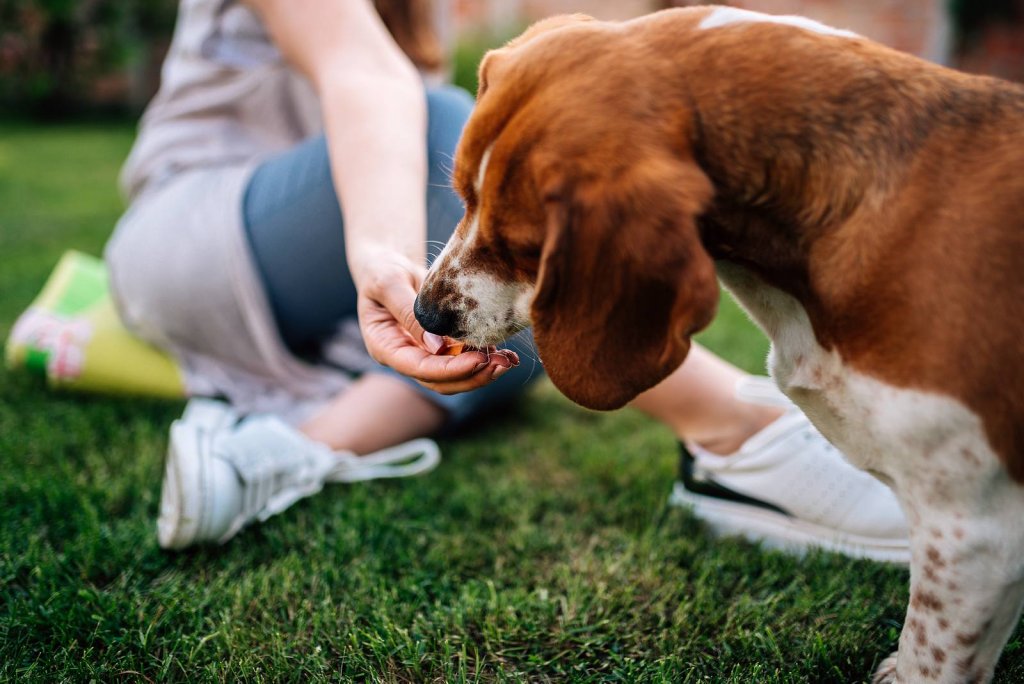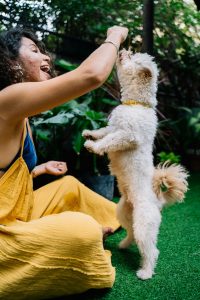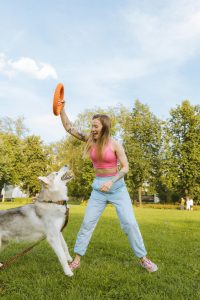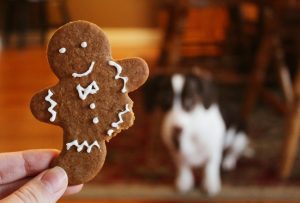Before I can talk about positive reinforcement dog training for dogs, I want to take you back to your childhood. Do you remember how happy you were when your parents gave you a dollar for an A on your report card? Did it make you want to study and do it again? Well, that is positive reinforcement 101.
And while dogs do not care about money, they do care about praise. And it can come in three variations, food, toys, or affection. Some breeds are food-driven, others are toy-driven, and then there are those like the American Pit Bull terrier, that are affection-driven.
Now, rewarding your puppy for desired behavior might sound simple enough. Yes, it is. But there are still things you need to know to master this basic technique.
Simply put, you reward behaviors you like and ignore those you do not like.
Types Of Rewards
As we said before, there are three types of rewards you can use. Fourth, if you count a clicker. Some dogs do amazing with clicker training. But generally speaking, food, toys, and affection are the three widely accepted.
So, positive reinforcement can include dog food or treats, praise, petting, or the favorite toy.
Now, most dogs are food-motivated. Speaking of treats, a dog treat should be enticing and irresistible to your pet. Experiment to find out which treats work best. And the more complicated and hard the exercise is, you should use a higher-value dog treat.
Treats should be very small, pea-sized, or even smaller. You do not want to overeat your dog while training. And every time you use a food reward, combine it with a verbal reward. For example, “yes’ or “good dog” and a small treat.
The Science Behind Operant Conditioning
The science behind positive reinforcement dog training for dogs has been around for a while. It all started with a scientist called Pavlov. You may have heard of the Pavlov experiment.
He used a bell to train his dogs. When the dinner bell rang, the dogs salivated. They learned to associate the bell with coming food. They were drooling with anticipation even before the meal arrived.
This phenomenon is known as classical conditioning or associated learning.
It happens with dogs all the time. For example, when the doorbell rings, puppies get excited because they anticipate a visitor.
But classical conditioning happens involuntarily. Operant conditioning is when you do active training with your canine. Some dog trainers call it trial-and-error learning. Basically, dogs learn to associate their behavior with its consequence.
Depending on the consequences, dogs increase the frequency of behaviors or decrease them. For example, when there is a reward for good behavior, dogs learn to display that behavior more. Sometimes, you can mistakenly reward bad behavior. For example, you talk on the phone, the dog barks for attention, and you give it a toy to play with while you continue the conversation. Do not be surprised if the dog barks the next time you talk.
Understanding The Four Quadrants
Positive reinforcement dog training for dogs is just one of the four quadrants in operant conditioning. When we talk about operant conditioning, we have to understand that consequences drive behavior. So, training is all about controlling the consequences of your dog’s actions and influencing the behaviors you want your dog to express.
When you give something to your dog, you’ve added something to the training, and that is known as a positive. On the other hand, if you take away something, like the toy, you’ve removed something, and that is called a negative. Think of it whether it is addition or subtraction.
The second aspect of operant conditioning is whether the consequence increases or decreases the behavior. Or in other words, reinforcement.
Combine these two aspects and you have the four quadrants of operant conditioning. You can use either of them for training your dog. As we said before, we will focus on positive reinforcement training. Here are the four quadrants.
- Positive reinforcement, adding something and increasing the behavior. You give your dog something they love when they behave properly, and they will do it more often
- Positive punishment is the second quadrant. You add something that the dog dislikes, to reduce the chances of them repeating a behavior in the future
- Negative reinforcement is the third quadrant, where you take something unpleasant away to make a behavior more frequent. For example, think about pulling on a choke chain. Release the pressure, removing something they dislike, as soon as your dog complies. The chances are, your dog will be more likely to do what you want the next time
- Negative punishment is the final quadrant, and it should be the second thing you use besides positive reinforcement. It is less violent than the other two. You remove something your dog likes to decrease the frequency. In broadest terms, ignore your dog when they jump on you
When You Should Use It?
So, when can you use positive reinforcement dog training for dogs? Given it sounds amazing and perfect, can you and should you use it all the time?
Well, you can use it to reinforce any good behavior. For example, rewarding your dog for sitting before letting them go outside of the front door. Rewarding your dog for sitting calmly before greeting people or other dogs. Always reward with verbal praise and treats/toys.
At the same time, be careful not to inadvertently use positive reinforcement to reward bad behavior or unwanted behavior. For example, letting your dog outside when they bark at a noise. This rewards their barking and reinforces it even more.
A classic mistake pet owners make is they punish their dog for doing something good. For example, your dog runs away chasing a scent. You call him, he doesn’t come, you begin yelling, and so on. Your dog eventually comes back to you, and instead of rewarding he came back, you punish them for running. You have given the reinforcement too late.
Will My Dog Beg For Food?
This is a common question among owners who have just ventured into the world of positive reinforcement training.
You might ask yourself will using treats encourage your dog to beg for food. Well, context is everything. For example, if you give them scraps off the dinner table, they will stick around. But if you use treats and dog food during training sessions, dogs understand they are working for a reward.
Why You Should Use Positive Reinforcement Dog Training For Dogs?
Here is a simple explanation of how and why positive reinforcement works. Think about it this way. Every time you use positive reinforcement, you are adding money to a “relationship piggy bank”. And when you punish by yelling “no”, you are taking money out.
If you use positive reinforcement, that piggy bank will be full. But only punishment will make it empty, which will result in a fearful dog. If your dog is scared, fearful, or lacks confidence, it is more likely to act out aggressively. Positive reinforcement is a humane and effective way to do some basic obedience training. Here are some benefits of it:
- Increases obedience and improves behavior
- Creates a stronger bond between the dog owner and the puppy
- Builds trust and improves communication
- Your dog becomes more responsive, attentive, and cooperative
- Makes the dog training session more enjoyable and pleasant for both you and the puppy
- Results in fewer behavior problems
- Provides better mental and emotional health for your dog
Tips For Success
Now that we talked about how, when, and why to use it, let’s finish off with some tips. At the end of the day, I want you to be successful. I want your dog to win and behave properly. And I want you and your dog to have a better and higher quality of life.
- Timing is everything. As I said before, you do not want to inadvertently, correct timing is essential
- Dogs don’t understand sentences, so be short in your commands and cues
- Start adding cues and words after your dog begins to understand the behavior
- Consistency is key, everyone in the family should be involved and repeat the same cues and commands
- Always give your dog a choice, and reward when they make the right choice
- Keep the dog training session short, upbeat, and fun
- Make sure your dog wins at the end of the obedience training session. The more your dog wins, the more he will be willing to work and train

